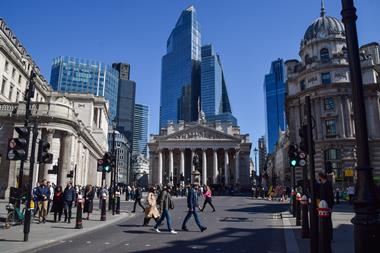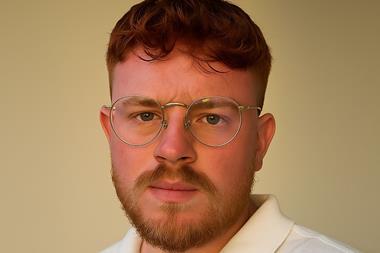The massive financial losses incurred by the insurance industry from the World Trade Centre attacks have made the market harden. It was stiffening even before the attacks, but since 11 September, premium rates have rocketed as brokers desperately seek cover for their clients.
The laws of supply and demand have kicked in quickly. More than $5bn (£3.52bn) has been pledged by investors to back new insurers and reinsurers in Bermuda, such as Arch Re and White Mountains.
And more is promised. Standard & Poor's insurance ratings director Don Watson predicts more reinsurance firms backed by hedge fund investors will emerge in the next two months.
"There are probably another five trying to come up. It is just a question of whether they can find the funding or staff. Around $10bn (£7bn) to $15bn (£10.6bn) will be injected into the industry and we will see $5bn to $10bn in 2002."
More money, less profit?
Money from insurers, reinsurers, brokers and venture capitalists will help provide capacity in a market where there is a severe shortage of retrocession. So the future looks brighter for brokers and their clients facing ten-fold premium hikes on some lines of business, like aviation.
But this additional wealth could have a negative impact on the industry's profitability. "There is growing concern that new capacity will reduce the rate environment, so it will not be the hard market we are predicting," says Watson.
The new cash will come too late for those renegotiating 1 January renewals. Watson says: "There will be panic buying and a demand for capacity. Rates are going to be pretty hard across the board for all property and casualty insurance and reinsurance. These new companies cannot accept business yet, so the scramble for capacity will go on through to the end of the year."
He adds: "The 1 July renewals are going to be more stabilised. The new capacity after January is also going to make it very difficult for further rate increases. "
The burgeoning hard market is already under threat. International Underwriting Association (IUA) chief executive Marie-Louise Rossi says: "The market needs new capacity, as capacity has been desired. But if a lot comes in, rates will go into a down cycle quite quickly."
Some insurers say the hard market will last a year, perhaps two, but no one predicts more than three.
The last upturn in the cycle was in 1993 and lasted three years. But the industry has changed dramatically in the past decade. For instance, the replacement of members' capital with corporate capital at Lloyd's means cashflows can be turned on faster.
Leadenhall Insurance Consul-tants director Karen Sinden says: "In 1994, new corporate capital was allowed into Lloyd's for the first time, but there were restrictions on ownership of managing agents. But the market was predominantly reliant on unlimited liability.
"In this cycle, there is a fundamental change. Lloyd's is mainly corporate capital, so if a company board says it will put in a certain amount of revenue, it will be available that day. Money will act more swiftly if rates are higher.
"Individuals are much slower to react, even though their members' agent advises them to put more money in. If they are paying losses, they are much more hesitant and it is harder to inject capital."
There are signs the current upturn will be shorter than the last. Watson says: "Some of the structures we have seen have buy-out provisions for current investors after three years. The thinking is it will be a hard market for three years, then pricing will fall to levels where it is not economical."
A lot rests on when these new start-ups will be able to underwrite.
Watson says: "It is going to be difficult to staff underwriting groups. Getting the financial people, the underwriters and technological expertise to be in the business by the year's end will be a challenge."
Other factors will also affect the period of profitability. Sinden says: "The upturn of rates in the Lloyd's Market may be short-lived, lasting from 18 months to two years. But changes in the economy could affect this position."
The prospect of a recession could see the markets stay hard longer. During the recessions of the 1920s, 1960s and the end of the 1980s to the 1990s, the market prospered.
Sinden explains: "If we see a change and we do move into an economic recession, this will affect the assets available to capitalise the insurance markets and the upturn should be longer."
"Traditionally, Lloyd's has been most profitable during economic recessions. Now we are globally linked to everything else.
"In the current economic climate, investors have the incentive to put more money into the insurance market because other investment areas are not that favourable."
New companies started since 11 September
Arch Reinsurance
Warburg Pincus and Hellman & Friedman
Funding: $1bn (£707.5m)
DaVinci Reinsurance RenaissanceRe Holdings and State Farm Mutual Automobile Insurance Company
Funding: $500m (£353.7m)
Endurance Specialty
Aon and Zurich Financial Services
Headed by: Kenneth LeStrange, chairman and chief executive officer of Combined Specialty
Funding: $1.2bn (£848.7m)
Talbot Holdings (syndicate name yet to be announced)
Black Diamond and Alleghany Underwriting
Headed by: Michael Carpenter, chief executive of Alleghany
Funding: $25m (£17.7m) loan, plus anticipated $50m (£35.4m)
White Mountains
Banc of America Securities LLC and Benfield Advisory
Headed by: Anthony Taylor, former deputy chairman of Wellington Holdings.
Funding: $1bn
Axis/Atlas Specialty
Marsh McLennan (Trident II)
Headed by: John Charman, former group president and chief executive of Ace International
Funding: $1bn
Application filed
Chubb, AIG and Goldman Sachs
Headed by: (speculated) Paul Ingrey, from Fidelity and Guaranty
Funding: speculated $500m
Rumoured
HSBC is currently in a fund-raising round for a new rein-surer, probably to be based in Dublin.
Hosted by comedian and actor Tom Allen, 34 Gold, 23 Silver and 22 Bronze awards were handed out across an amazing 34 categories recognising brilliance and innovation right across the breadth of UK general insurance.












































